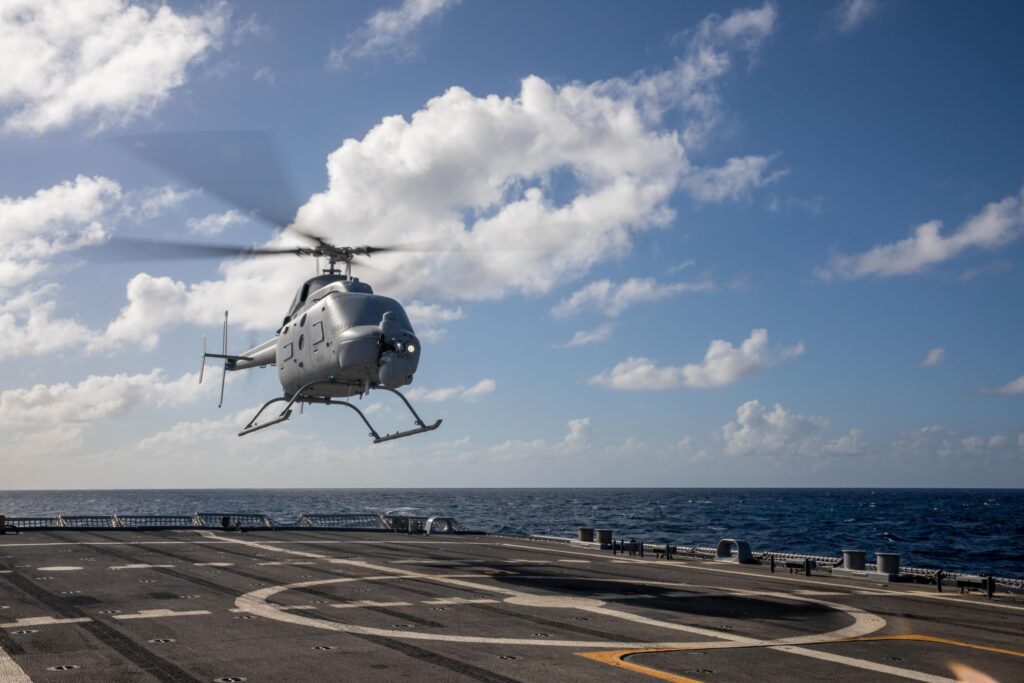
ARLINGTON, Va. — The U.S. Navy has not officially announced it yet, but its newest version of the Navy’s Fire Scout unmanned helicopter — the MQ-8C — apparently is on its first deployment, according to Navy photographs.
An MQ-8C Fire Scout was depicted in series of Navy photographs taken Jan. 6 while the MQ-8C was operating from the Freedom-class littoral combat ship USS Milwaukee (LCS 5) in the Caribbean Sea. The ship was deployed in the U.S. 4th Fleet’s area of operations in support of Joint Interagency Task Force South’s mission, which includes counter-illicit drug trafficking missions in the Caribbean and Eastern Pacific, according to the caption.
The MQ-8C was being operated by the “Sea Knights” of Helicopter Sea Combat Squadron (HSC) 22, Detachment 5. The squadron also operates the MH-60S Seahawk manned helicopter.
The Milwaukee had departed Naval Station Guantanamo Bay, Cuba, on Jan. 3 after two weeks in port following an outbreak of the COVID-19 virus in the crew.
In December, an MQ-8C was photographed on the deck of Independence-class littoral combat ship USS Jackson (LCS 6) while in port in Apra Harbor, Guam. The caption stated the Jackson was part of Destroyer Squadron Seven “on a rotational deployment in the U.S. 7th Fleet area of operation to enhance interoperability with partners and serve as a ready-response force in support of a free and open Indo-Pacific region.”
The MQ-8C in the Guam photograph was going through pre-deployment functional ground checks for a detachment of Helicopter Sea Combat Squadron 23 — based at Naval Air Station North Island, California — that will operate the MQ-8C from the USS Jackson.
The MQ-8C, which achieved initial operational capability in June 2019, is an upgrade to the Fire Scout System mainly in that it uses a Bell 407 airframe, which is larger than the earlier-design MQ-8B’s airframe and equipped with more powerful engines, thus having a greater payload and endurance, up to 12 hours on station.
The MQ-8C can carry the ZPY-8 search radar or an electro-optical/infrared sensor and uses the same ground control station and the MQ-8B. The Navy plans to add more capability in the form of Link 16 data link, passive targeting, and a mine-countermeasures payload.
Northrop Grumman was under contract to deliver 38 MQ-8Cs, all of which have been delivered. The company has delivered 30 of the earlier MQ-8B version.
- Insitu Going Strong at 30, Focusing on Maritime Operations - April 8, 2024
- Navy Awards Boeing Additional Funds for MQ-25 Drones for Testing - April 3, 2024
- Benign 4th Fleet AOR Useful for Unmanned Vehicle Operationalization, Admiral Says - March 27, 2024






